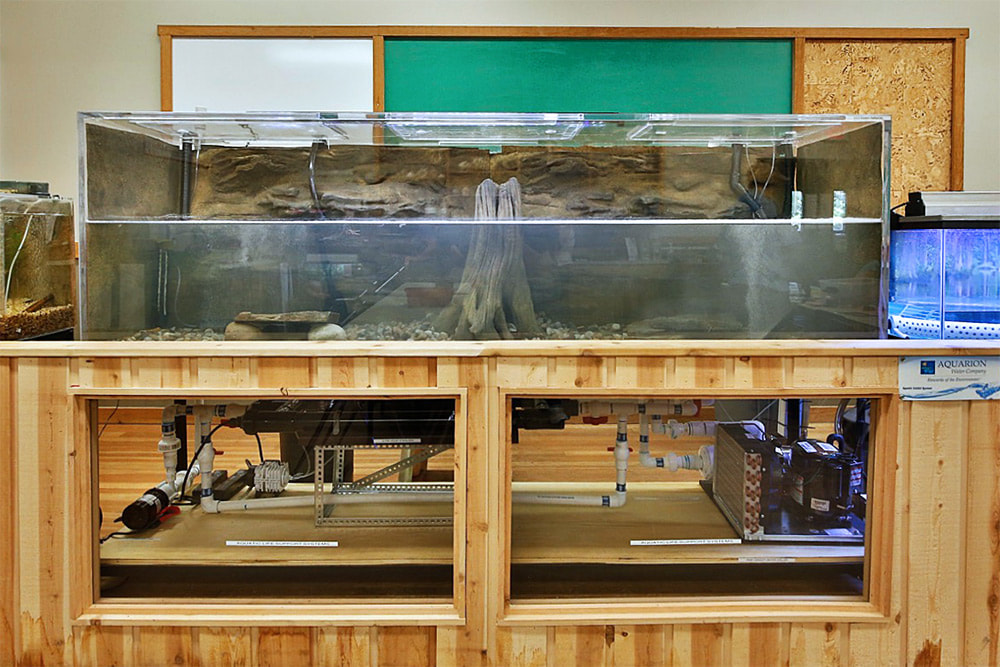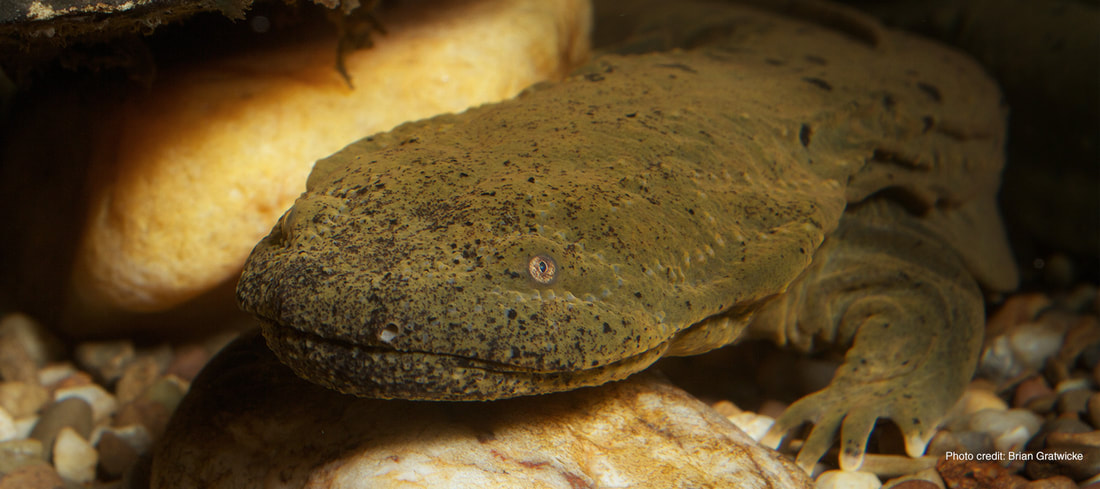Eastern Hellbender (Cryptobranchus alleganiensis alleganiensis)
|
Physical Description: The Eastern Hellbender is the largest aquatic amphibian in the United States. They have been given lots of nicknames such as “snot otter”, devil dogs” and, “Allegheny alligators”. Eastern Hellbenders are fully aquatic amphibians that breathe entirely through cutaneous respiration, or through their skin. That means they need clean, cold, oxygen-rich freshwater to live.
The Eastern Hellbender grows up to 29 inches in length and they weigh between four and six and a half pounds. Their color varies from grayish brown to olive brown or all black. They have a dark mottling over their back and sides. Eastern Hellbenders have a sleek, flattened head and body that is well adapted to their environment of swift, flowing streams. They have short stout legs, small eyes, and long rudder-like tails. They have folds of skin along their sides that increase the surface area for oxygen absorption. The larvae are about an inch long and they have gills for breathing. When they reach 2 years of age the gills disappear, and they start breathing entirely through their skin. The Eastern Hellbender does not hibernate and is active year-round. They are mostly nocturnal and hide under logs or rock slabs in the water during daylight hours. 1 https://www.iucnredlist.org/fr/species/59077/82473431 |
Habitat: The Eastern Hellbender lives in clean, fast flowing water that has low pollution and low siltation. They live in dens built under large boulders and rocks and have small home ranges.
Range: The Eastern Hellbender’s range extends in the United States from southern New York to northeastern Mississippi, west to southern Illinois. Diet: They are carnivores. They primarily eat crayfish; however they will also eat fish, worms, frogs, small snakes, and other invertebrates. Lifespan: The Eastern Hellbender lives 30 years in the wild and up to 50 years in human care. Social Structure: Eastern Hellbender males dig out a nest to attract females. Females will then lay a double strand of eggs ranging from 100 to 500 in total. Once the eggs are laid the male chases the female away from the nest, then guards the nest until the eggs hatch approximately 70 days later. Males have been known to depredate their nests, removing individuals or whole clutches, for reasons that many scientists are working to determine. Status: Vulnerable1 Other: Thanks to the sponsorship of our conservation partner, Aquarion, we have Eastern Hellbenders residing in the Kathy Brady Education Center. Sponsored by: |










